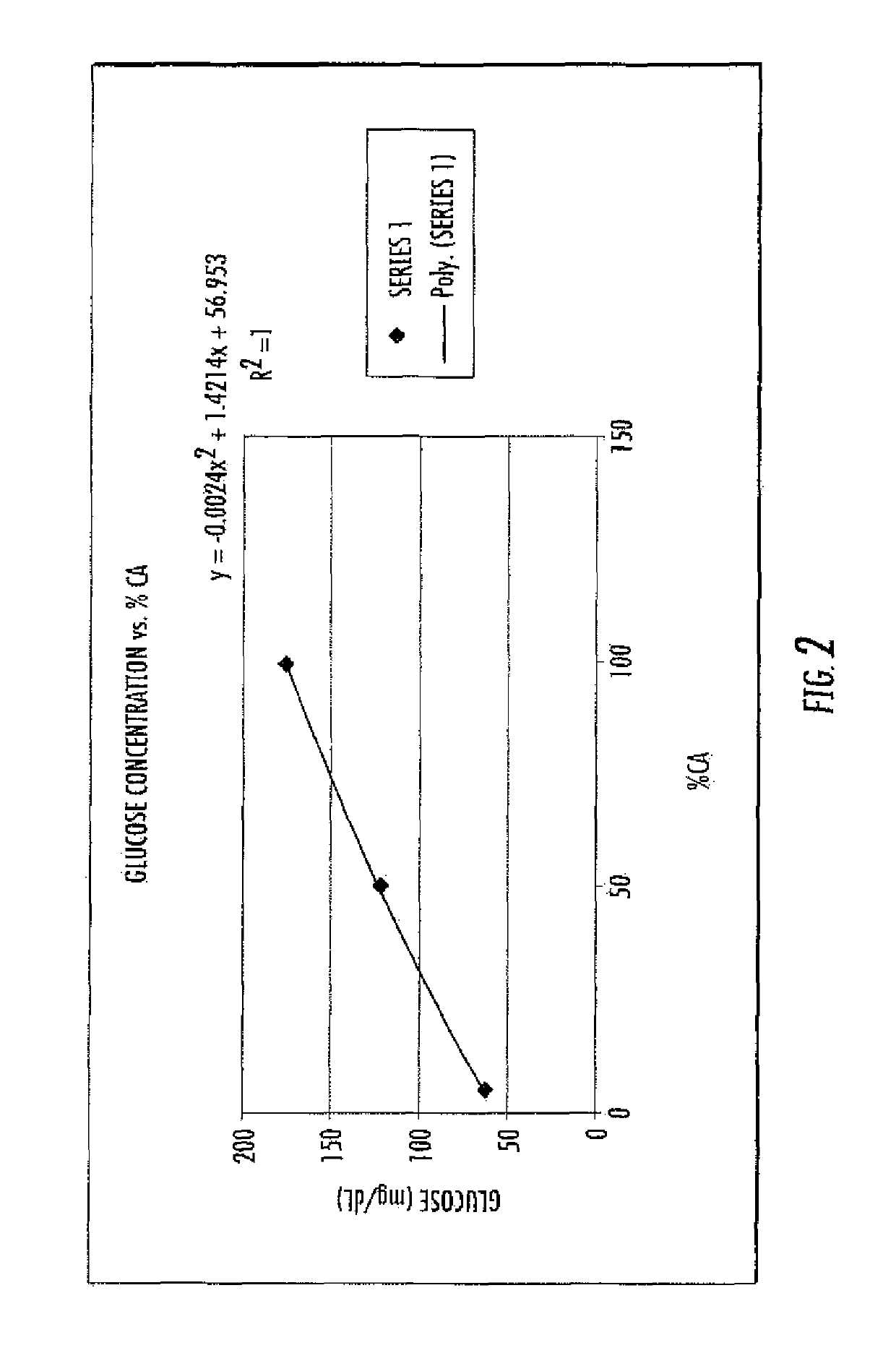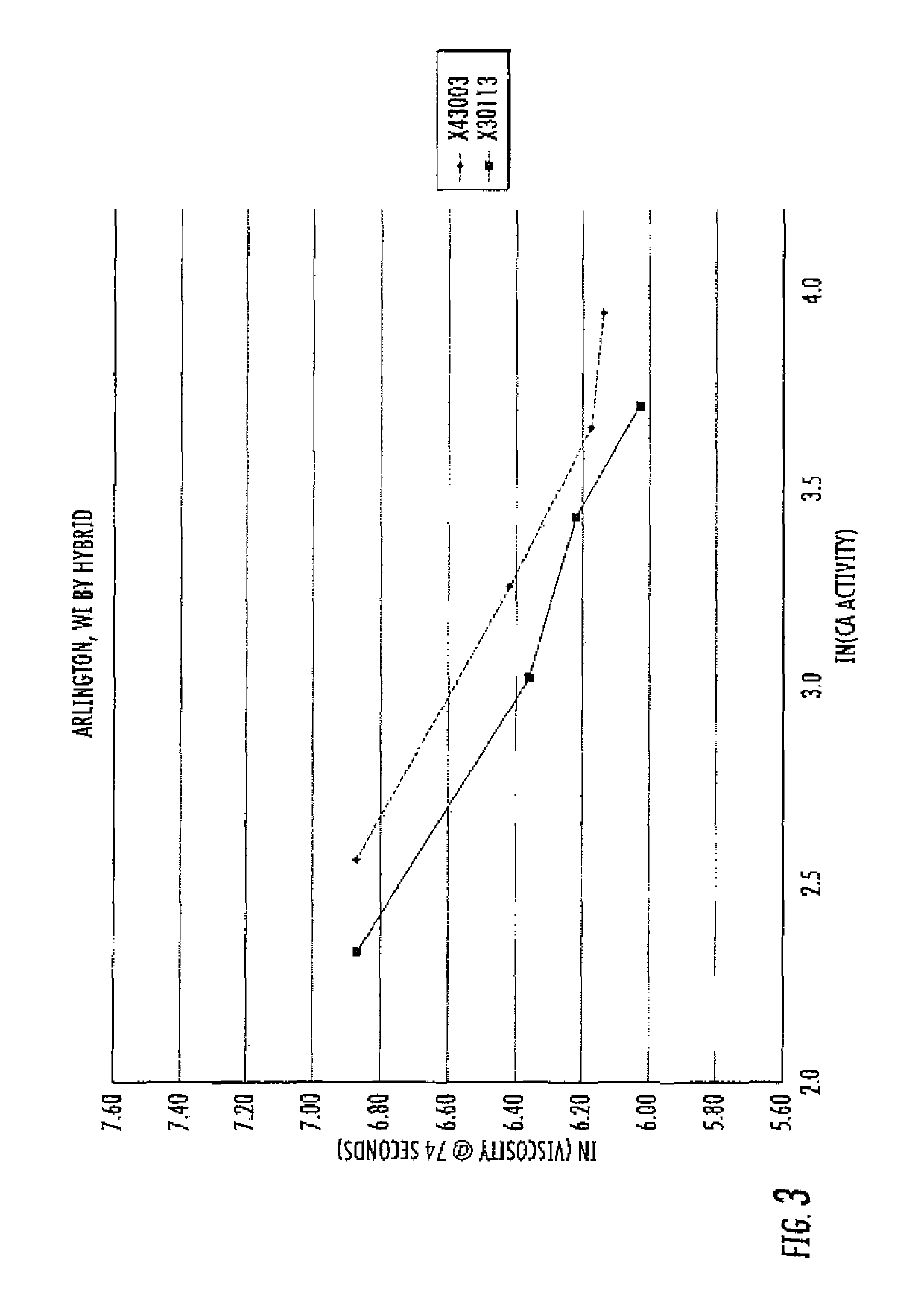Methods for distinguishing and identifying plant varieties
a plant variety and phenotypic characteristic technology, applied in the field of methods of distinguishing and identifying plant varieties, can solve the problems of expensive methods, time-consuming, and inability to distinguish or identify plant varieties by phenotypic characteristics, and achieve the effect of rapid and reliable assay
- Summary
- Abstract
- Description
- Claims
- Application Information
AI Technical Summary
Benefits of technology
Problems solved by technology
Method used
Image
Examples
example 1
[0179]Methods.
[0180]Modified Fast Assay for Corn Amylase:
[0181]approximately 200 g of seed was ground (i.e., dry milled) separately for each hybrid to flour in a Perten® 3600 Disc Mill (setting 0; Perten Instruments AB; Huddinge, Sweden). Next, approximately 9 g of flour was weighed into a Strarchmaster® 2 Viscometer (Newport Scientific Pty. Ltd.; Warriewood, Australia) and mixed with water to create a 28% dry solids corn slurry. The corn slurry has an acceptable buffering capacity, so it was not necessary to add agents to control pH.
[0182]The temperature of the corn slurry reaction mixture in the viscometer was set to 80° C. with continued agitation and a gradual ramping up of the temperature to 95° C. The test profile was carried out as shown in Table 1.
[0183]
TABLE 1Test profile for viscosity measurements in corn amylase.Time (min:sec)Temperature (° C.)Agitation Speed (rpm)00:008096000:04Ramp to 9516001:149516001:14END—
Viscosity, agitation speed and temperatu...
example 2
Fast Assay for Corn Amylase Using a Standard Coffee Maker
[0185]Methods.
[0186]Corn Amylase Assay in Standard Coffee Maker:
[0187]15 g of corn flour containing a thermo-tolerant α-amylase is added to a coffee filter fitting a standard 4 cup coffee maker such as a Mr. Coffee® 4-Cup Dispenser (Sunbeam Products, Inc.) (or any non-programmable standard coffee maker). 60 g of tap water is then added to the pre-heated coffee machine. The vaporized water is collected in the filter container with the pre-weighed corn flour and held for 1-3 minutes before dispensing. Pressure is applied to the filter to ensure full liquid collection.
[0188]Amylase Quantification:
[0189]The collected sample from the coffee machine is mixed and a glucose meter is used to determine the glucose concentration, which can be used to determine the dose of amylase in the flour. A glucose meter such as the ReliOn® Ultima Glucose Meter (ReliOn) may be used for measuring glucose levels. The glucose meter is used according to...
example 3
n of Maize Hybrid Standard Curves
[0191]Standard curves correlating viscosity with alpha-amylase activity were generated for three corn hybrids grown in various environmental conditions expressing a thermophilic α-amylase, 797GL3 (See FIGS. 3-10). It is intended to use the resulting standard curves to quickly distinguish one hybrid from another by measuring viscosity over a predetermined period of time (approximately 74 seconds) in the presence of an alpha-amylase. Thus for example, one could identify an unknown maize hybrid expressing a thermophilic α-amylase by 1) grinding seed of unknown hybrid (10-100 grams is sufficient) to flour; 2) Weigh approximately 9-20 grams of flour into a viscometer such as a Starchmaster® 2 Viscometer (Newport Scientific Pty. Ltd.; Warriewood, Australia); 3) mix with water to create a 28% dry solids corn slurry; 4) continue agitation via a gradual ramping up of the temperature to 95° C. (for example as shown in Table 1) measuring final viscosity at 74 s...
PUM
 Login to View More
Login to View More Abstract
Description
Claims
Application Information
 Login to View More
Login to View More - R&D
- Intellectual Property
- Life Sciences
- Materials
- Tech Scout
- Unparalleled Data Quality
- Higher Quality Content
- 60% Fewer Hallucinations
Browse by: Latest US Patents, China's latest patents, Technical Efficacy Thesaurus, Application Domain, Technology Topic, Popular Technical Reports.
© 2025 PatSnap. All rights reserved.Legal|Privacy policy|Modern Slavery Act Transparency Statement|Sitemap|About US| Contact US: help@patsnap.com



